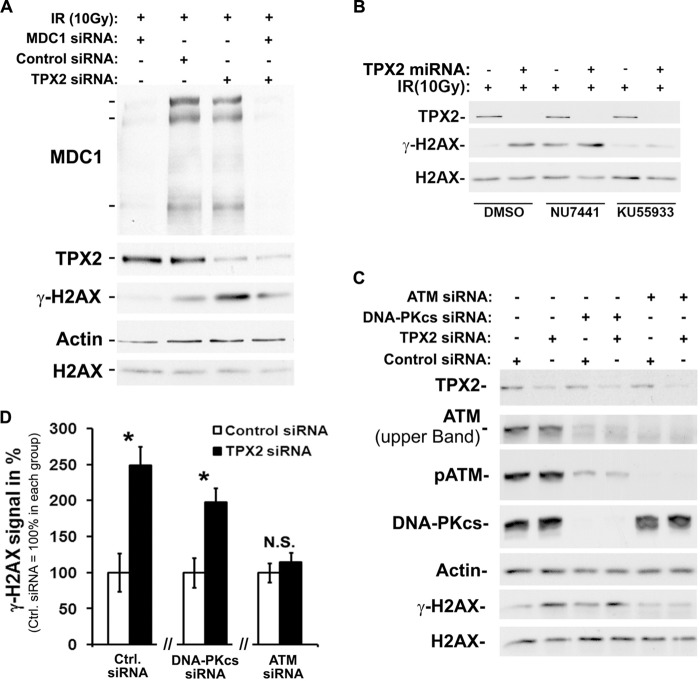FIGURE 7.
The ionizing radiation-dependent increase in γ-H2AX caused by TPX2 depletion is antagonized by inhibition or knockdown of MDC1 or ATM. A, an siRNA-mediated knockdown of MDC1 antagonizes the ionizing radiation-triggered γ-H2AX hyperamplification in HeLa cells caused by TPX2 depletion (lane 3 versus lane 4). Note that during the DNA damage response TPX2 depletion and MDC1 depletion have an opposite effect on γ-H2AX levels (lane 1 versus lane 3). B, inhibition of ATM with KU55933 antagonizes the ionizing radiation-dependent increase in γ-H2AX caused by depletion of TPX2. Inhibition of DNA-PK with NU7441 does not rescue this γ-H2AX hyperamplification phenotype. C, siRNA-mediated loss of ATM abrogates the ionizing radiation-dependent increase in γ-H2AX caused by depletion of TPX2. siRNA-mediated loss of DNA-PKcs partially decreases ATM levels (as previously described in Ref. 71) but does not rescue the γ-H2AX hyperamplification caused by TPX2 depletion. D, quantification of γ-H2AX signals in C. γ-H2AX signals of control siRNA-treated cells were considered as 100% and compared with the respective TPX2 siRNA-treated cells (n = 3 (independent experiments); N.S., non-significant; *, p < 0.05, unpaired t test, S.E.). Error bars represent S.E. All cells were treated with 10 Gy and harvested after 1-h recovery. Ctrl., control.

